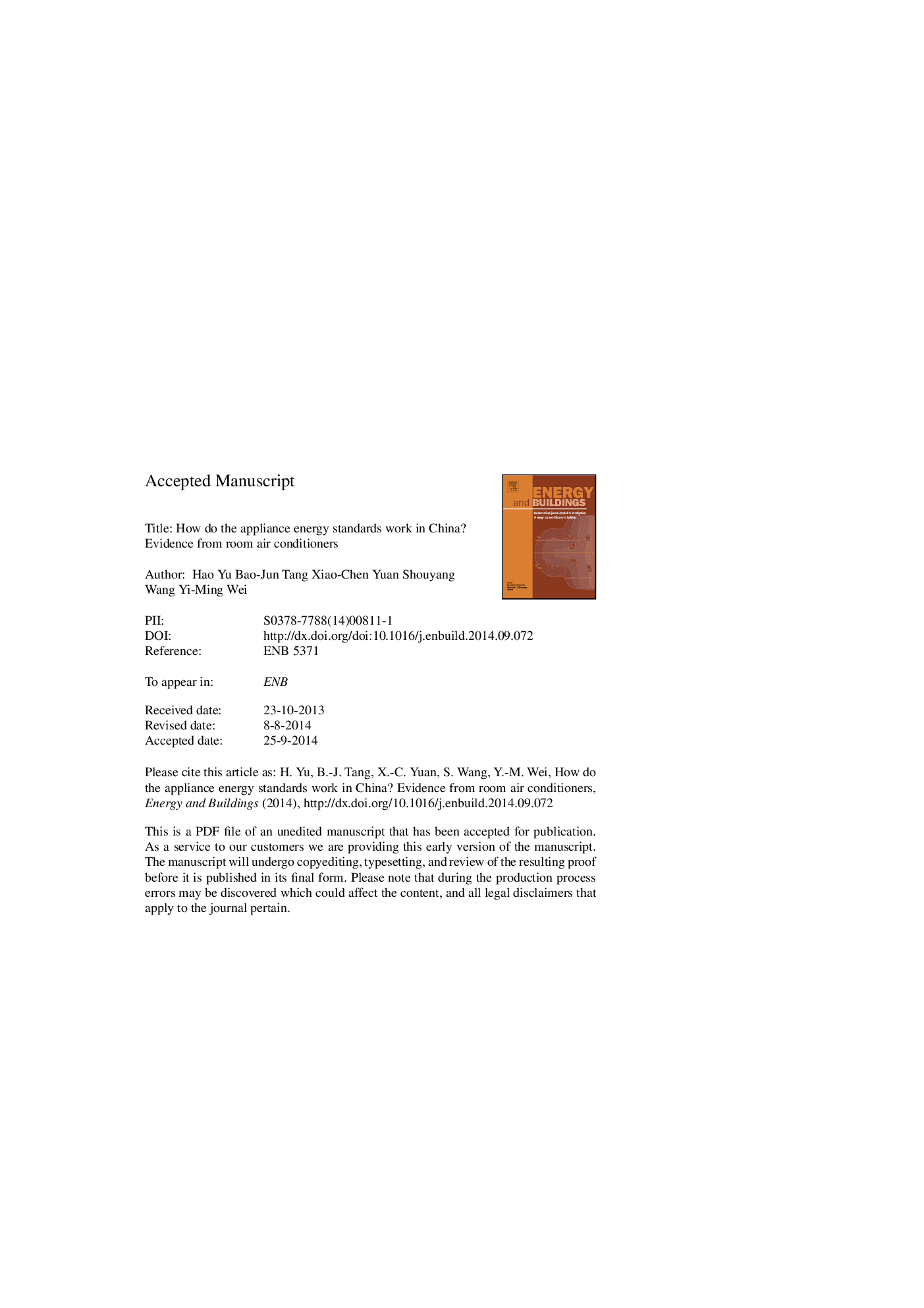| Article ID | Journal | Published Year | Pages | File Type |
|---|---|---|---|---|
| 6733099 | Energy and Buildings | 2015 | 33 Pages |
Abstract
China has been the world's largest producer and consumer of air conditioners, and more and more RACs1 would be owned by China's households along with the rapid economic development. Air Conditioner is also considered as one of the largest potential contributors to energy reduction among home appliances because of the huge energy consumption. Therefore, the national energy efficiency standards were issued to promote the use and production of high-efficient RACs. According to China's energy efficiency standards, this paper investigated the electricity savings and CO2 emission reductions from RACs over the period of 2005-2025. The results indicate that the rural RAC market which develops more slowly than the urban one still has great potential, and government has to revise subsidy policies to make the standards more effective, especially for rural areas. In 2025, the total electricity consumption of RACs is projected to be 598-674Â TWÂ h, while the amount without energy efficiency standards is 753Â TWÂ h. From 2005 to 2025, the energy efficiency standards for RACs can save 1430-2540Â TWÂ h electricity and reduce 908.3-1610. 1Â Mt CO2 emissions in different scenarios. Finally, we suggest that the standards should be revised every 4 or 5 years with higher revision pace of 8% to 10%
Related Topics
Physical Sciences and Engineering
Energy
Renewable Energy, Sustainability and the Environment
Authors
Hao Yu, Bao-Jun Tang, Xiao-Chen Yuan, Shouyang Wang, Yi-Ming Wei,
